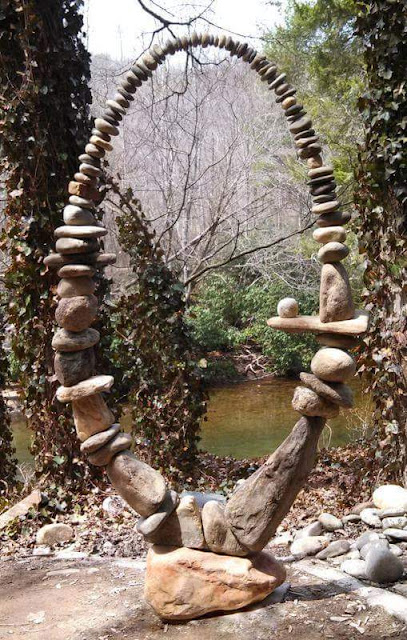Rock Balancing is a captivating sculptural art form that involves carefully arranging rocks and stones in a way that creates a delicate and seemingly impossible balance. This unique practice combines elements of art, meditation, and nature, resulting in mesmerizing structures that defy gravity and challenge our perceptions of what is possible. As such Rock Balancing is effectively a sub-movement of the larger Earth Art movement.
The art of rock balancing dates back centuries and can be found in various cultures around the world. It involves selecting rocks of different shapes, sizes, and textures and skillfully stacking them without the use of adhesives, wires, or any external support. The balance achieved in these structures relies solely on the precise positioning and weight distribution of the rocks themselves.
The process of rock balancing requires patience, focus, and a deep understanding of the materials at hand. Artists carefully study the individual characteristics of each rock, considering factors such as shape, weight, and surface texture. They intuitively assess how the rocks interact with each other, experimenting with different arrangements until they find the perfect balance point.
One of the fascinating aspects of rock balancing is its ephemeral nature. Unlike more permanent sculptural forms, rock balance creations are often temporary and subject to the forces of nature. Wind, water, and other environmental factors can easily disrupt the delicate equilibrium, leading to the eventual collapse of the structure. This impermanence adds a sense of fleeting beauty and reminds us of the transient nature of existence.
Rock balancing is not only a visual art form but also a meditative practice. As artists engage in the process, they enter a state of focused concentration and mindfulness. They become attuned to the subtleties of the rocks, their weight distribution, and the energy flow within the structure. The act of balancing the rocks becomes a harmonious interaction between the artist, the materials, and the surrounding environment.The significance of rock balancing extends beyond its visual appeal and meditative qualities. It serves as a symbolic representation of balance and harmony in life. The precarious balance achieved in these structures reflects the delicate equilibrium we strive to maintain in our own lives. Rock balancing reminds us of the importance of finding equilibrium between opposing forces, embracing both the challenges and joys that come our way.
Furthermore, rock balancing fosters a deep connection with nature. Artists often practice their craft in natural landscapes, using the rocks found in their surroundings. This interaction with the environment allows for a profound appreciation of the earth's beauty and the interconnectedness of all things.
In conclusion, rock balancing is a sculptural art form that goes beyond the physical act of stacking rocks. It combines artistry, meditation, and a profound connection with nature. Through the delicate balance achieved in these structures, rock balancers create captivating and temporary works of art that evoke a sense of wonder, challenge our perceptions, and remind us of the beauty and transience of life.

